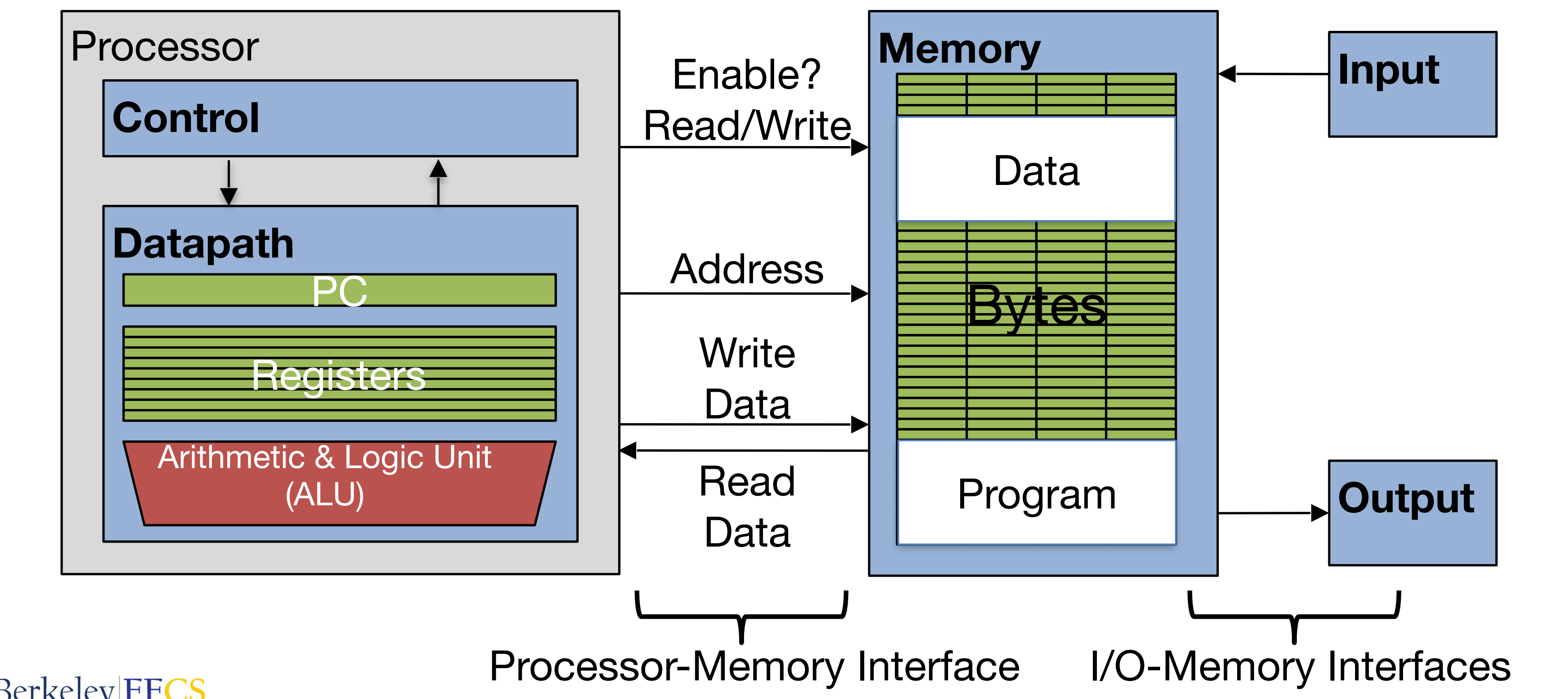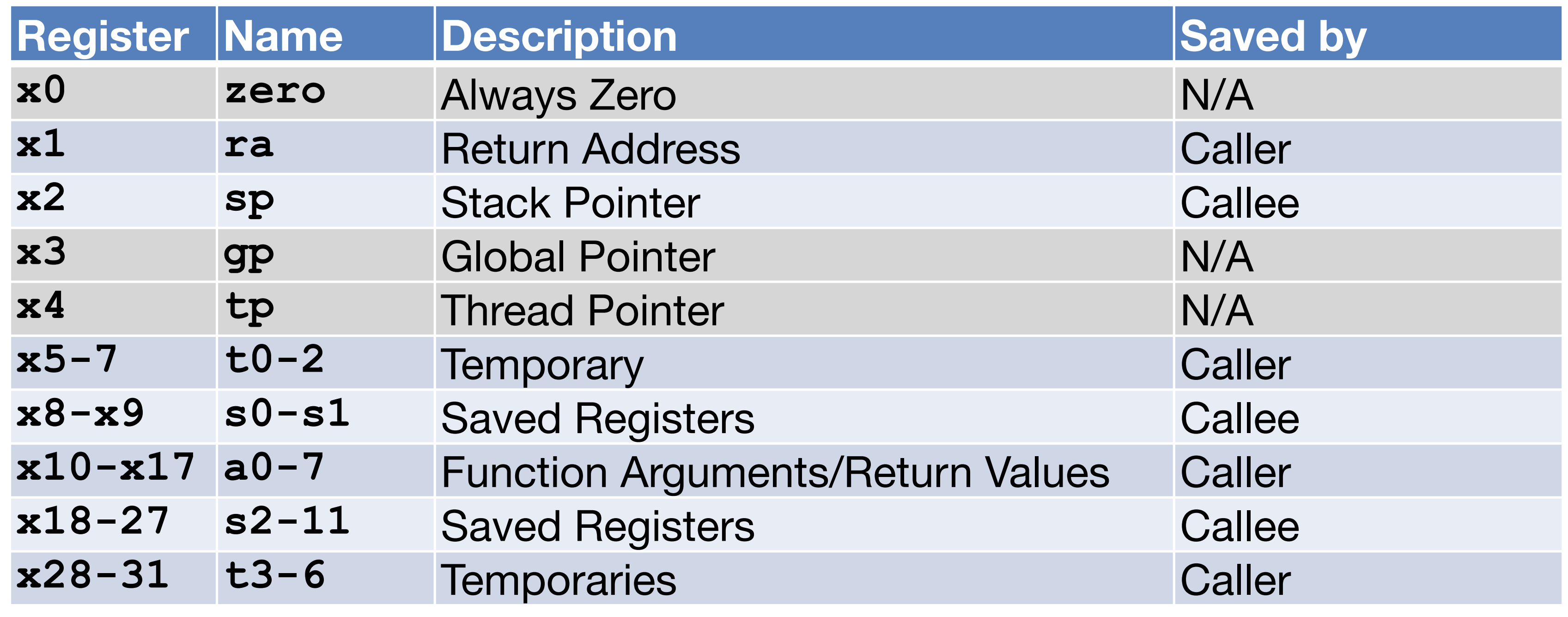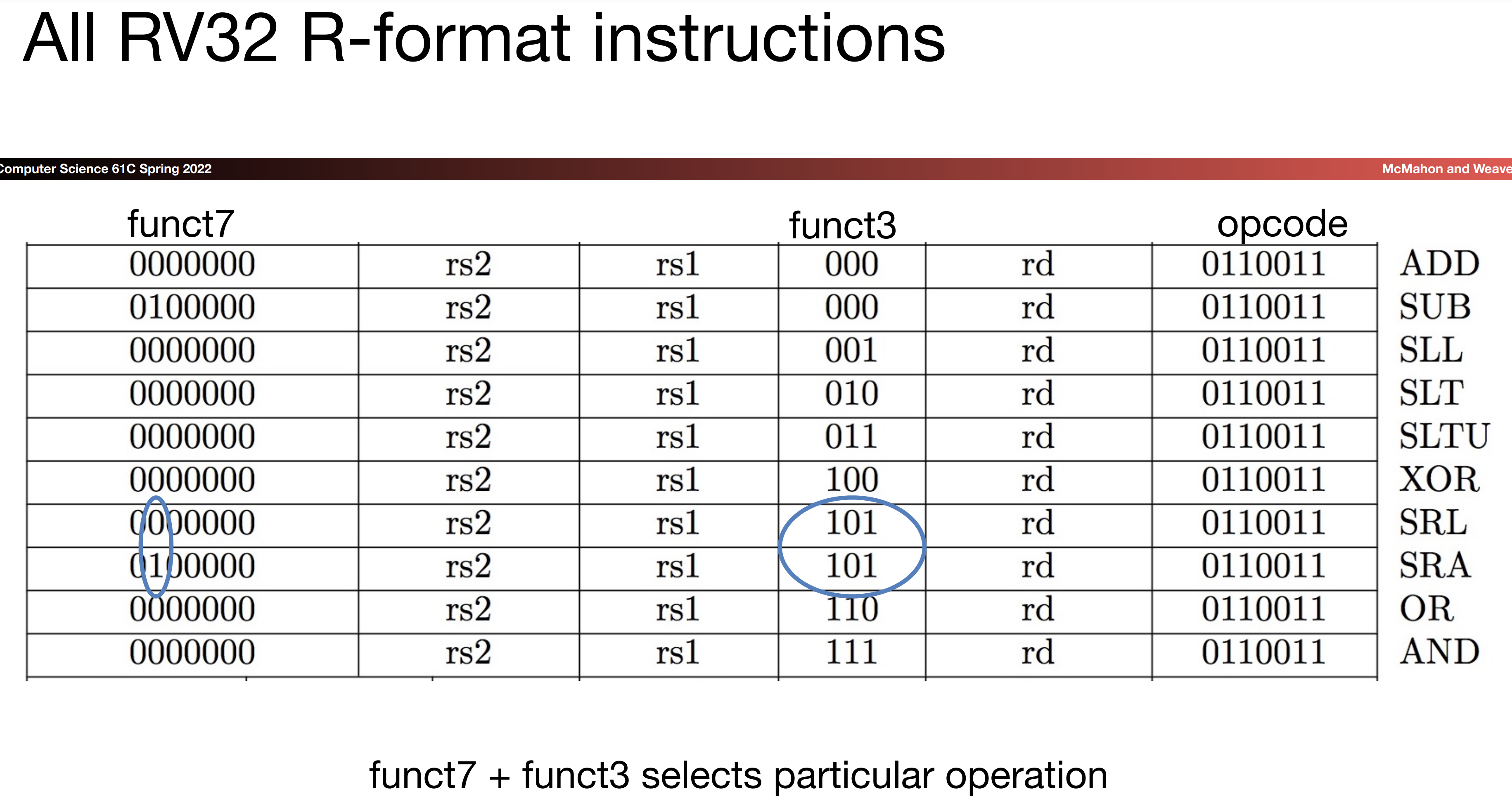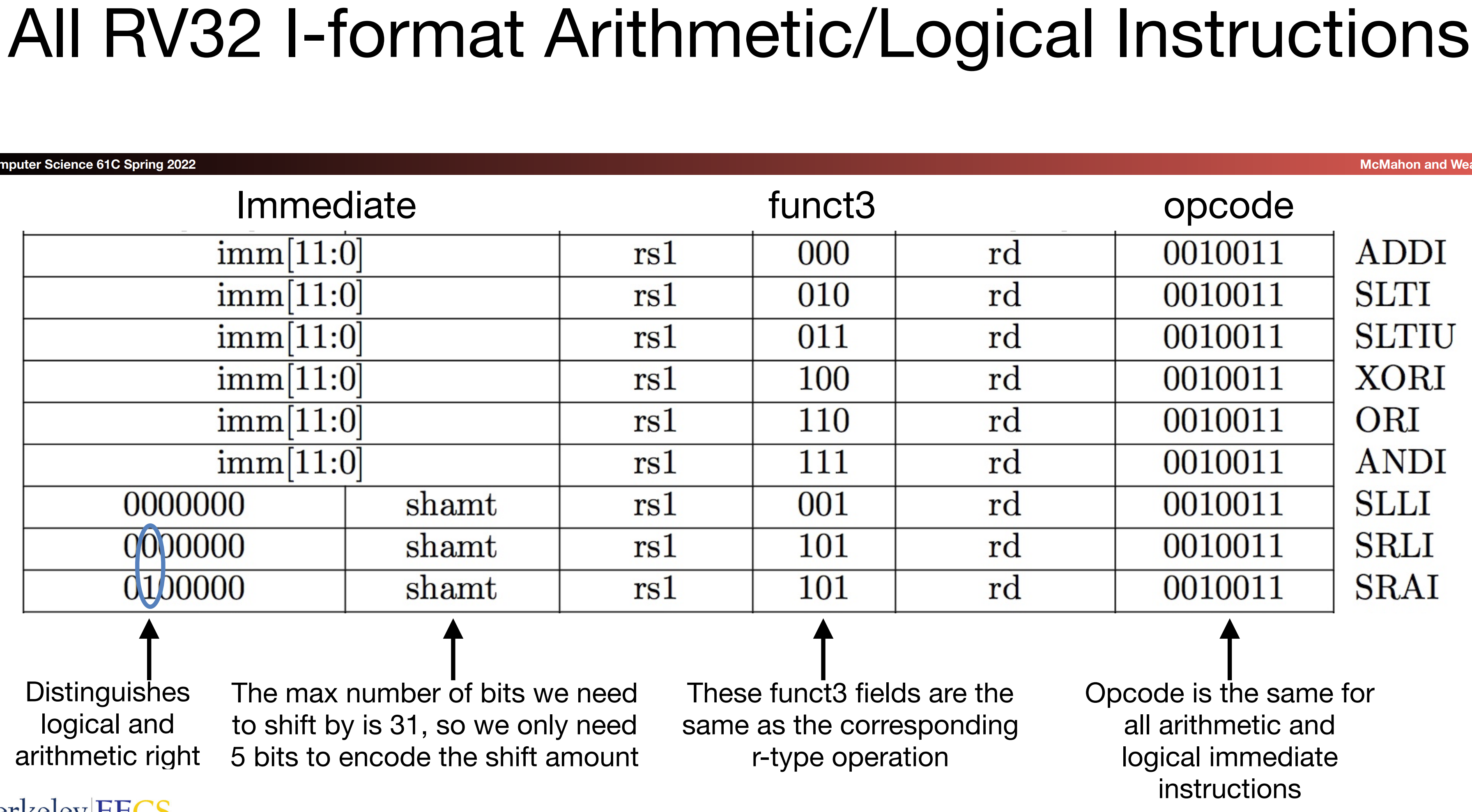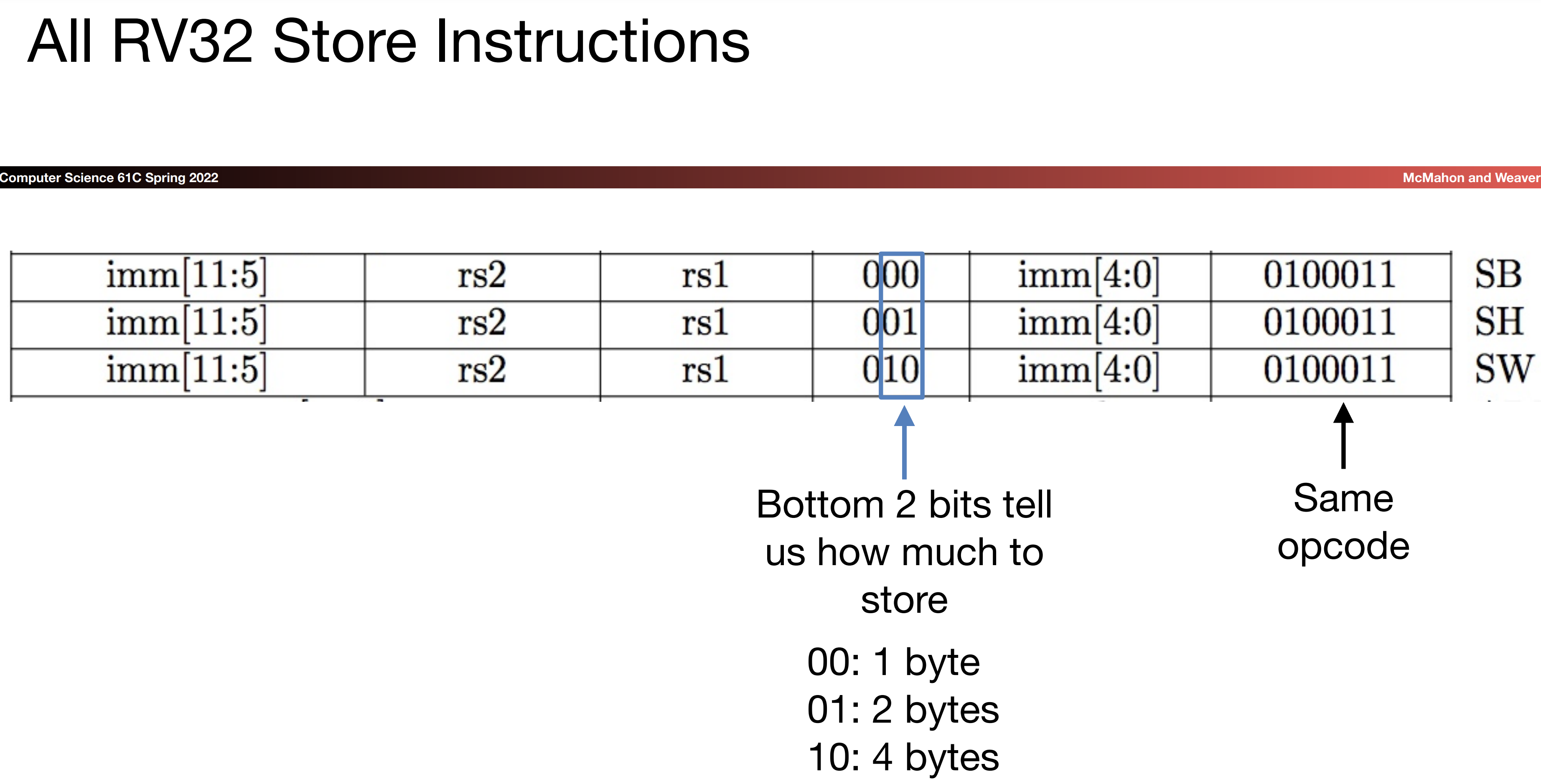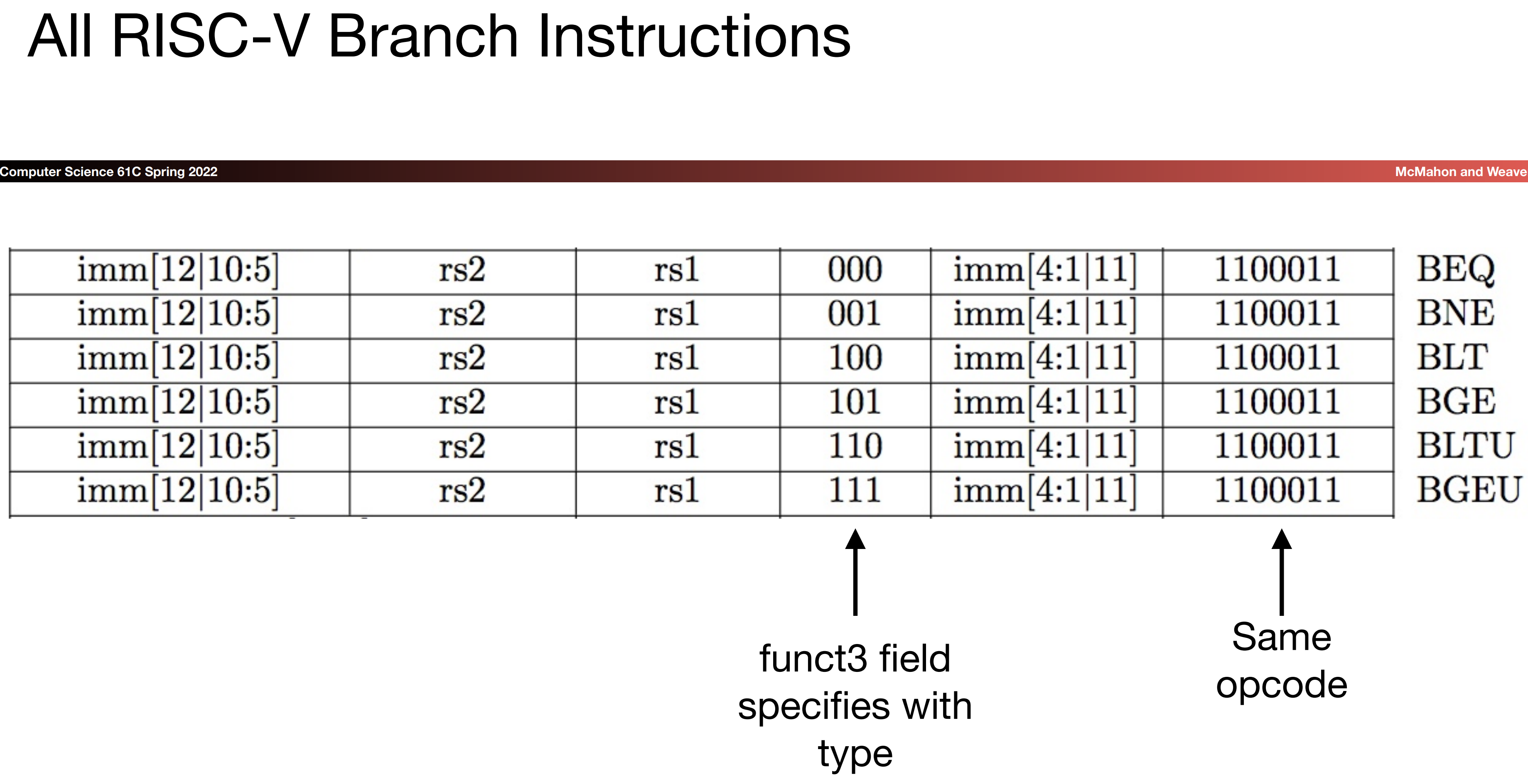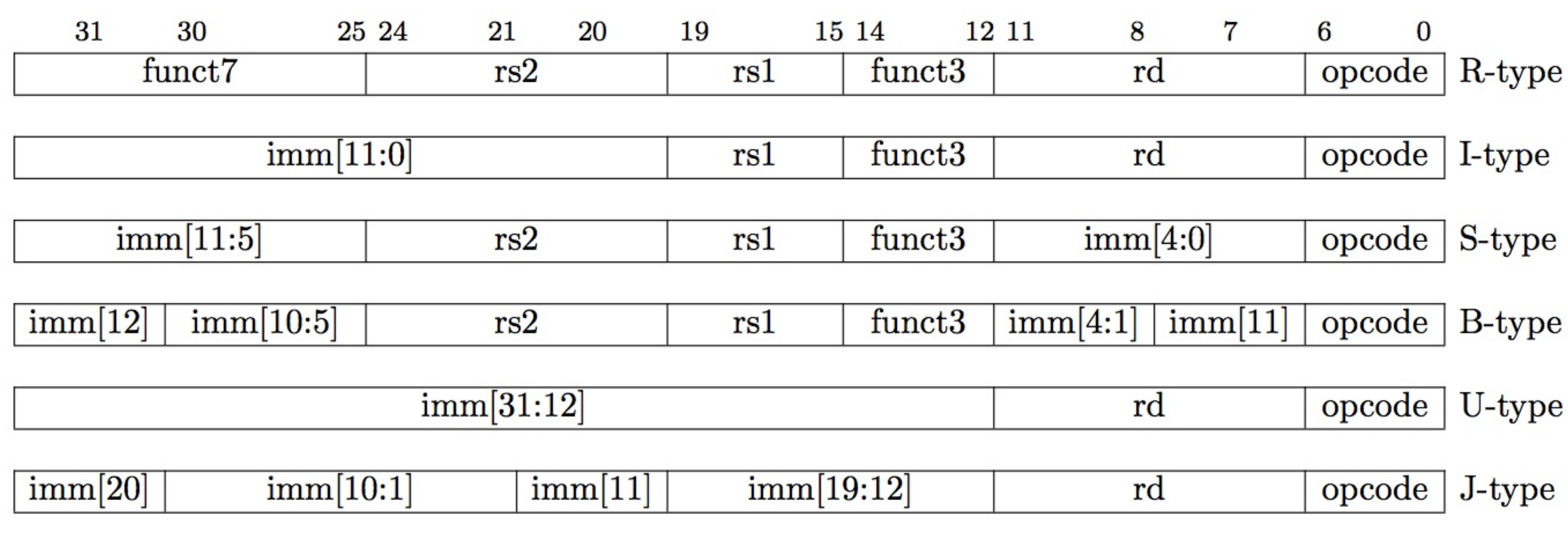4 RISC-V Basic
对应 lecture 6 - 8
Basic¶
- CPU:
- Basic Job:
- Execute instructions one after another in sequence
- Each instruction does a small amount of work (a tiny part of a larger program)
- 不同 CPU implement different sets of instructions
- Basic Job:
- ISA: Instruction Set Architecture
- RISC: Reduced Instruction Set Computer
- 一个指令对应一个操作
- RISC-V: RISC 的一个后续版本,简洁 About RISC-V International
- Register: 在 processor 中的小存储单元
- Operations 在 register 中完成,非常快
- RISC-V 中共 32 个 registers,每个 register 大小为 32 bits (4 bytes / 1 word)
- 从 0 编号到 31:
x0, x1, …, x31x0始终存储 0- 不能改变名称
- Register file: 处理器内部的一个存储单元集合,通常包括多个寄存器,分为 general-purpose registers 和 special-purpose registers
- Operations 在 register 中完成,非常快
Operations¶
GAS
# x1 = x2 + x3
<div markdown="1" style="margin-top: -30px; font-size: 0.75em; opacity: 0.7;">
:material-circle-edit-outline: 约 1179 个字 :fontawesome-solid-code: 66 行代码 :material-image-multiple-outline: 12 张图片 :material-clock-time-two-outline: 预计阅读时间 7 分钟
</div>
add x1, x2, x3
# x1 = x2 - x3
sub x1, x2, x3
# 取出数组第三位的值,加一后放回
lw x10, 12(x15)
addi x10, x10, 1
sw x10, 12(x15)
# 读取 byte
lb x10, 3(x15)
addi x10, x10, -1
sb x10 3(x15)
add和x0可用于移动值:add x3, x4, x0
Immediates¶
提供常数,如 addi x3, x4, -10
sub命令没有 immediates,因为可以用加法实现,就没必要引入额外的指令- Addi immediates 限制在 12 bits,在进行运算时,sign extended to 32 bits
Load and Store¶
lw(load word): load data from memory to processor registerslw x10, 12(x15)将x15中存储的地址偏置(offset) 12 bytes 之后,取得的值存储进x10(可以理解为取 int 数组第 3 个元素的地址)- offset: 必须为 constant,不能为 register
sw(store word): save data from processor registers to memorysw x10 12(x15)将x10中的值存储进地址x15偏置 12 bytes 得到的地址
- 类似的还有
lb(load byte)、sb(store byte)、lh(load half-word)、lhulb中,使用 sign extend;可以使用lbu(load byte unsigned) 来进行 zero extendsb中,将最低 8 位存储进去,所以没有 extend
- load instructions 是 I-format 的
Logical Instructions¶
| C Operator | RISC-V Instructions |
|---|---|
| & | and |
| | | or |
| ^ | xor |
| << | sll(shift left logical) |
| >> | srl(shift right logical) / sra(shift right arithmetic) |
Branches¶
Conditional¶
- 当
reg1 == reg2时,跳转至L1标签处;否则继续执行下一个语句
- 举例
- 类似的还有
blt(branch less than),bge(branch greater or equal to)- 对于无符号的数,加上
u后缀bgeubltu - 只有
bltbge,因为这两个足以应对所有比较;但是存在伪指令bgt,会被编译器转换为真实 RISC-V 指令bgt x2, x3, L1 -> blt x3, x2, L1
- 对于无符号的数,加上
Unconditional¶
- jump to label:
j label - 举例:实现 if-else 语句
- 实现 for 循环:
- 假设
x8存储了A的地址
GAS
add x9, x8, x0 # x9 = &A[0]
add x10, x0, x0 # sum = 0
add x11, x0, x0 # i = 0
addi x13, x0, 20 # x13 = 20
Loop: bge x11, x13, Done
lw x12, 0(x9) # x12 = A[i]
add x10, x10, x12 # sum += A[i]
addi x9, x9, 4 # x9 = &A[i] + 1
addi x11, x11, 1 # i += 1
j Loop
Done:
Jump Function¶
- jump function 需要执行两个功能:
- 存储跳转位置(在函数中需要,而 if-else、for 语句中不需要)
- 更新 PC 值
jal rd, label(jump and link)rd(register destination): 用于存储 return address 的寄存器,即PC + 4label: 标签。被 assembler 解释为有 20 bits 的 offset- 实际上是命令
jal rd, offset的更高级的抽象形式,将label转换为对应的offset之后进行操作 jar rd, offset: 将PC + 4的值存入rd,然后进行跳转PC = PC + offset- 可以使用
x0来避免储存返回地址:jal x0, labelj label实际上是jal x0, label的伪指令
jalr rd, offset(rs1)(jump and link register): 用于实现任意跳转- 先将
PC + 4存储到rd,然后跳转PC = rs1 + offset - 在本课中,写作
jalr rd, rs, imm - 同样有伪指令
jalr x0, ra, 0 -> jr ra -> ret(ra是一个 calling convention) - 举例
- 先将
Saving Registers¶
- 在多重调用函数的情况下,需要用 stack 来存储中间变量(registers)
- 压栈:
addi sp, sp, -x - 出栈:
addi sp, sp, x
- 压栈:
- 保存 registers 的方式需要遵循 calling convention
Calling Convention¶
- Temporary registers: 由 caller 保存
- Saved registers: 由 callee 保存
Calling Functions¶
- Put parameters in a place where function can access them (
a0-a7) - Transfer control to function (
jal, j, jalr) - Acquire (local) storage resources needed for function (
spmove) - Perform desired task of the function
- Put result value in a place where calling code can access it (
a0-a1) - Return control to point of origin (
ret)
Instruction Formats¶
对于 instructions,有
- 每一个 instruction 都是 32 bits 大小
- 都被划分为不同的 fields
- 有不同的方式划分一个 instruction 的不同部分
R-format¶
Deepseek 的讲解:deepseek-R-format
I-format¶
S(tore)-Format¶
如 store instructions sw,sb,sh
B(ranch)-format¶
由于在 branch 中,有 12 bits 用于存储 offset immediates,且又由于 PC 的值为 4 bytes 的,所以可以忽略最低的两位(总为 0),则可以跳转到相对位置 \(\pm 2^{11}\) 个指令(\(\pm 2^{13}\) 个 bytes)
实际上,immediates 的有效值为 imm[12:1] << 1
J(al)-format¶
在 jal rd, label 指令中,assembler 解释为有 20 bits 的偏置 immediate
- 实际偏移量为
imm[20:1] << 1,因为最后一位 0 被省略了 - 这种不自然的划分是为了简化硬件上的实现,见 6-processor-design
- 目标地址的计算:
target_address = PC + sign_extend(imm[20:1] << 1)
在 jalr rd, rs, imm 指令中,使用 I-format,故最后一位 0 不可省略
U-format¶
lui x10, imm(load upper immediate): 将imm存储到目标寄存器中的前 20 bits 中- 由于
addi中的imm限制为 12 bits,故可以结合lui和addi用来存储任意大小的 32 bits 常数
- 可以用伪指令
li来简化上述过程:li x10, 0x87654321 auipc x10, imm(add upper immediate pc):x10 = pc + imm << 12
